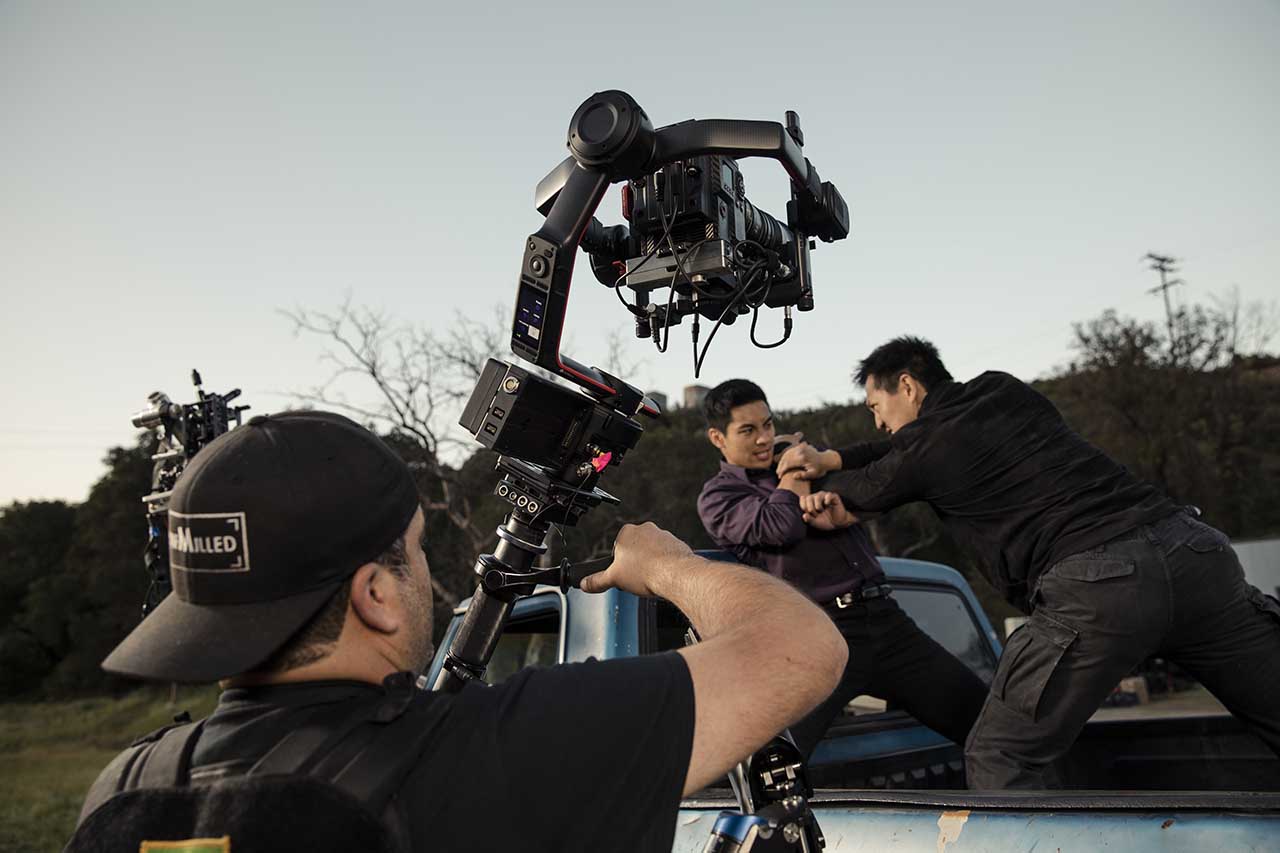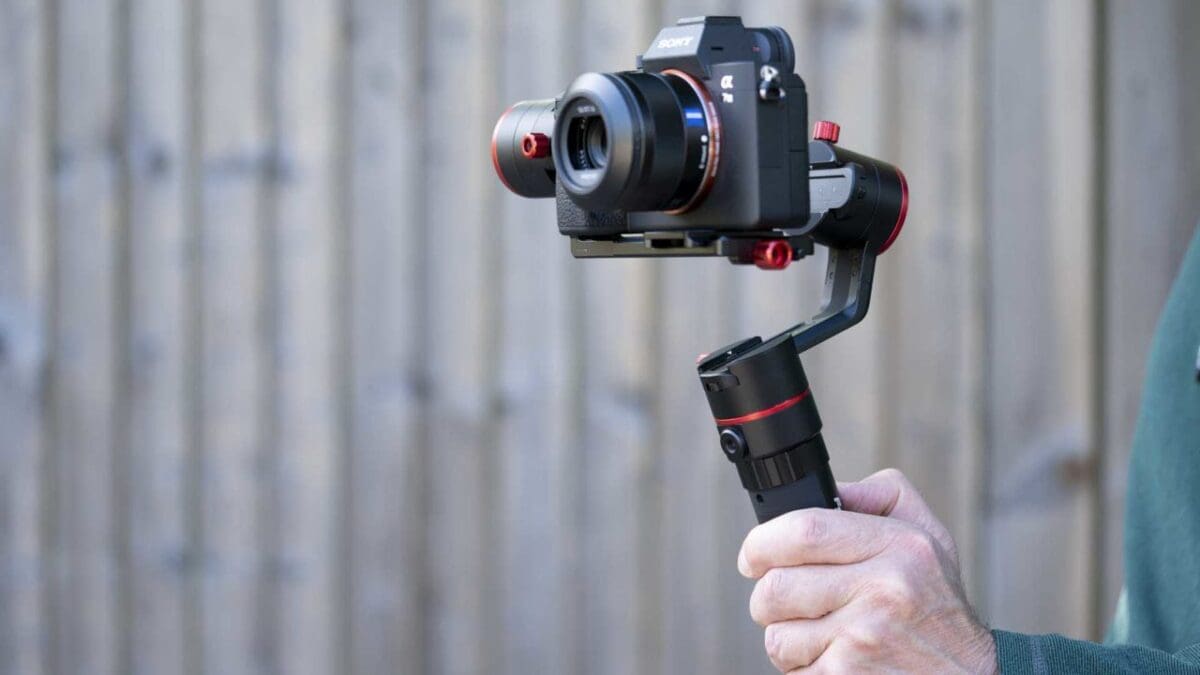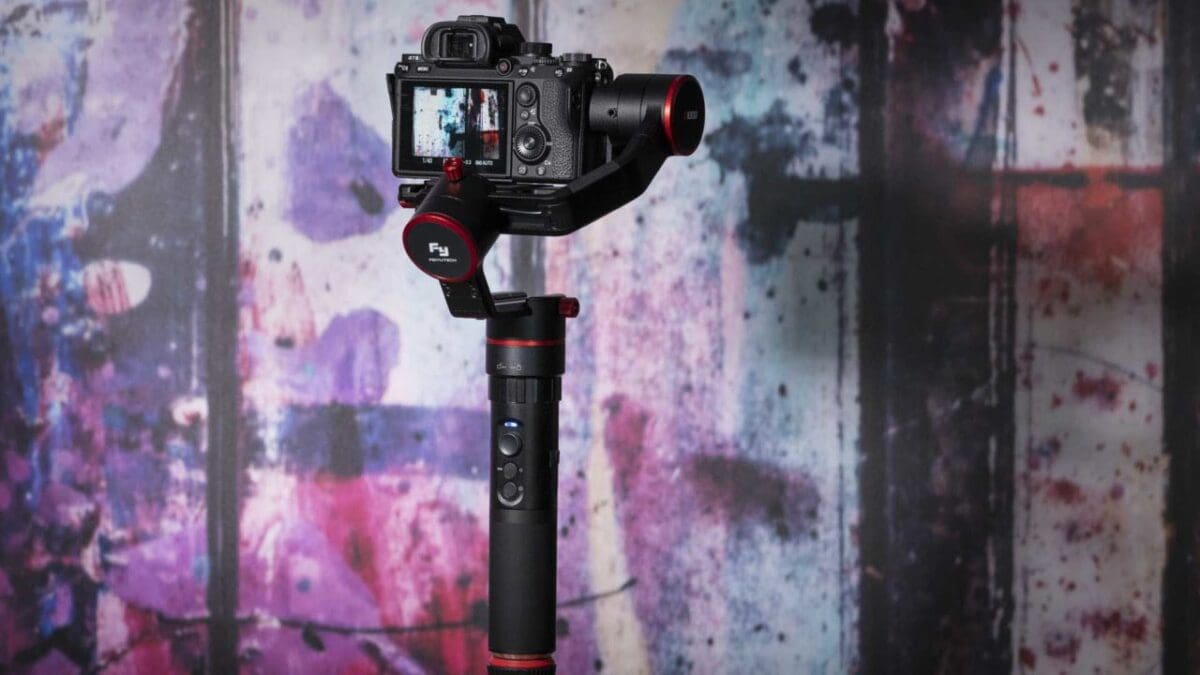Unless you’ve planned to shoot blurry footage for creative reasons it’s imperative that you give your camera steady support when shooting your videos. Steve Fairclough examines and explains the best camera support for video, running through all your options from gimbals to rigs and cages to video heads.
What you’ll learn
- The importance of keeping your camera steady for video
- Why to start with a photo tripod
- Choosing and using monopods
- Using rigs, cages and steadicams
- What are video heads?
- Gimbal options explained
- How to get dolly shots
What you’ll need
- A camera or device with at least 4K shooting options
- AF and manual focusing options for video shoots
- A camera support – tripod, monopod, steadicam or gimbal
- A notebook to marry up shots to required camera support
Depending on the type of footage you want to shoot it’s pretty much a given that you’ll need some sort of support for your camera. Whether you’re shooting whilst staying relatively still or shooting ‘run and gun’ on the move you’ll have to choose which type of support will best suit your filming needs. In this guide we take a closer look at the support choices you can make…

What is the best tripod for shooting video?
If you’re starting out shooting videos it might be best to stick to a standard camera tripod, which, provided it’s on sturdy ground, will offer support for steady, shake-free footage.
Once you’ve got used to shooting video footage with a photographic tripod you might want to consider investing in a video tripod.
You may not have noticed it before but video tripods differ from their photo counterparts as they usually have legs that spread far wider and are less prone to any wobble.
They are generally larger, more robust, often have bigger ‘video heads’ to attach the camera to and usually have spirit levels and some sort of pan/tilt handle – all of these features are designed to keep the camera as steady as possible and vibration-free during video recording.
The key difference between using a photographic tripod and a video tripod is that for stills you’ll want your camera to stay still whilst for video you’ll want a support that allows your camera to stay steady whilst it is moving. For videos you may want to follow a moving person or vehicle, pan across a landscape or tilt from the top of a mountain to the bottom – all of which will require a very steady support.
Key video tripod brands to look out for include Velbon, Manfrotto, Benro, Miller and Camlink.
Tripods can be bought for under £100 up to well over £1000 and specifications will differ in terms of how much ‘payload’ the tripod will support, how robust the tripod is, if they offer a quick-release head (which allows you to rapidly switch from supported shooting to hand-held shooting), leg locking options and a variety of other factors.

Using monopods for capturing movement
Monopods are lightweight, easy-to-use and can be very versatile, particularly when combined with modern day in-camera stabilisation systems. Monopods are great for when you quickly need to reposition your camera to shoot from a fresh angle and, when collapsed, they can act as an additional stabiliser for your camera.
As a general rule a monopod will allow you to be more mobile than shooting with a tripod, so you need to plan and make sure if a tripod or monopod best suits your shooting needs.
Securing a monopod against your waist or to a belt can also help you to shoot steady moving footage due to the additional anchor points. It’s important to also think outside the box for video shoots, so just don’t think a monopod should be placed on/rooted to the ground.
Think about using your monopod at high angles (maybe to capture a crowd scene from above), low angles (to give the view of a child or a pet), and from side-to-side for creative shooting.
Major monopod brands include Gitzo, Manfrotto, Sirui, Benro, Digiant and many others. Some may offer more height than others, more robust or more lightweight construction and differing options for adding video heads or, in some cases, extra legs to a monopod!

Using rigs, cages & steadicams for video
If you went on to a motion picture set you’d see all sorts of elaborate rigs and cages for the cameras involved, but it’s unlikely you’ll have to be quite so dramatic! The simplest set-up is probably a shoulder rig (you’ll often see news cameramen working with these), which uses the natural weight support of your shoulder to help to prevent any shake in your footage as well as providing more fluid movement.
A rig may also include a quick-release plate and some rails on which other accessories – like focus pullers, clamps, lights, microphones or audio recorders – can be easily mounted.
A cage is a frame that surrounds your camera on which various other accessories can be mounted. Cages often have a handle above the camera that allows it to be held steadily for low-angle handheld shots.
Additionally, encasing your camera in a cage will protect it from potential knocks.
Counterweighted devices, such as Steadicams, screw into the tripod socket at the bottom of cameras and use a weight to provide ballast that counteracts and softens any movement in many shooting situations.
The advantage of Steadicams is you can walk almost anywhere with them – for example, tracking a subject up a flight of stairs. More expensive versions are motorised gyroscopes, which can counteract almost any movement for shake-free footage.

Video heads vs standard tripod heads
Video heads are very similar to standard photographic tripod heads but they are slightly refined to aid videographers. The most important of these is smooth fluid heads. The construction of these means when you are panning horizontally or vertically (known as tilting) the pan has a smooth, even resistance – thus allowing you to pan or tilt at a constant speed.
Panning is controlled via an arm and more expensive heads will have a friction control that can change the level of resistance for when slower or faster pans are required.
Some heads also offer the ability to lock the head so that it only moves across a particular axis, allowing your camera to either be only panned or tilted. Video heads can be part of a tripod package or can be bought separately.

Using a gimbal to shoot steady video footage
In the age of drones you’ll often hear gimbals being mentioned but what are they? In a nutshell a gimbal is a pivoted support that slows the rotation of an object about a single axis. In essence it’s a mechanical stabilizer that uses three axes of rotation to keep a camera/device steady via three internal motors.
As well as being used on drones you can have the choice of gimbals for shooting video with devices such as smartphones, action cameras (like GoPros), mirrorless camera and DSLRs. Gimbals can be used for shooting vlogs, action shots, shooting on the move and many other applications.
Key gimbal brands include Removu (which produces the rainproof S1 model for GoPro cameras), DJI, Zhiyun, Wewow, GoPro, Gudsen and Feiyu. Gimbal prices tend to range from well under £100 to almost £1000, with the higher spec models that are capable of taking larger loads being the more expensive versions.
How to get dolly shots
You will no doubt have watched movies that have shots where you can clearly see that the camera is moving smoothly across a scene – these are known as dolly shots. You probably won’t have the budget to buy or hire a major dolly system but you can choose from a variety of other products to get similar results.
These include camera sliders (which can capture short dolly shots), tabletop dollies, tripod dollies or even a homemade solution such as taping a monopod on a skateboard and moving with it.
As with all of the camera support options detailed above the key factor to consider if you’re thinking about a dolly shot option will be what type of shot you want to end up with. Key dolly accessory brands include Sachtler, Manfrotto, Glidecam, Benro and many more.
Make a shot list; then choose your support
The bottom line on which type of support you choose will be what you need to shoot and how much you want to pay to ‘get the shot’. Throughout this series of blogs on shooting video I have hammered home the message of making shot lists to help make sure you get the shots you want and you know exactly what equipment you are going to use…
The message is exactly the same for choosing and using camera supports – write down the shot list for your film and detail what equipment you’ll be using (camera, lens, lighting, tripod etc) to help you to get the best possible footage.
This will ensure you know exactly what you’re shooting and how; giving you peace of mind that you’ll capture the smooth and dynamic shots that you want.



